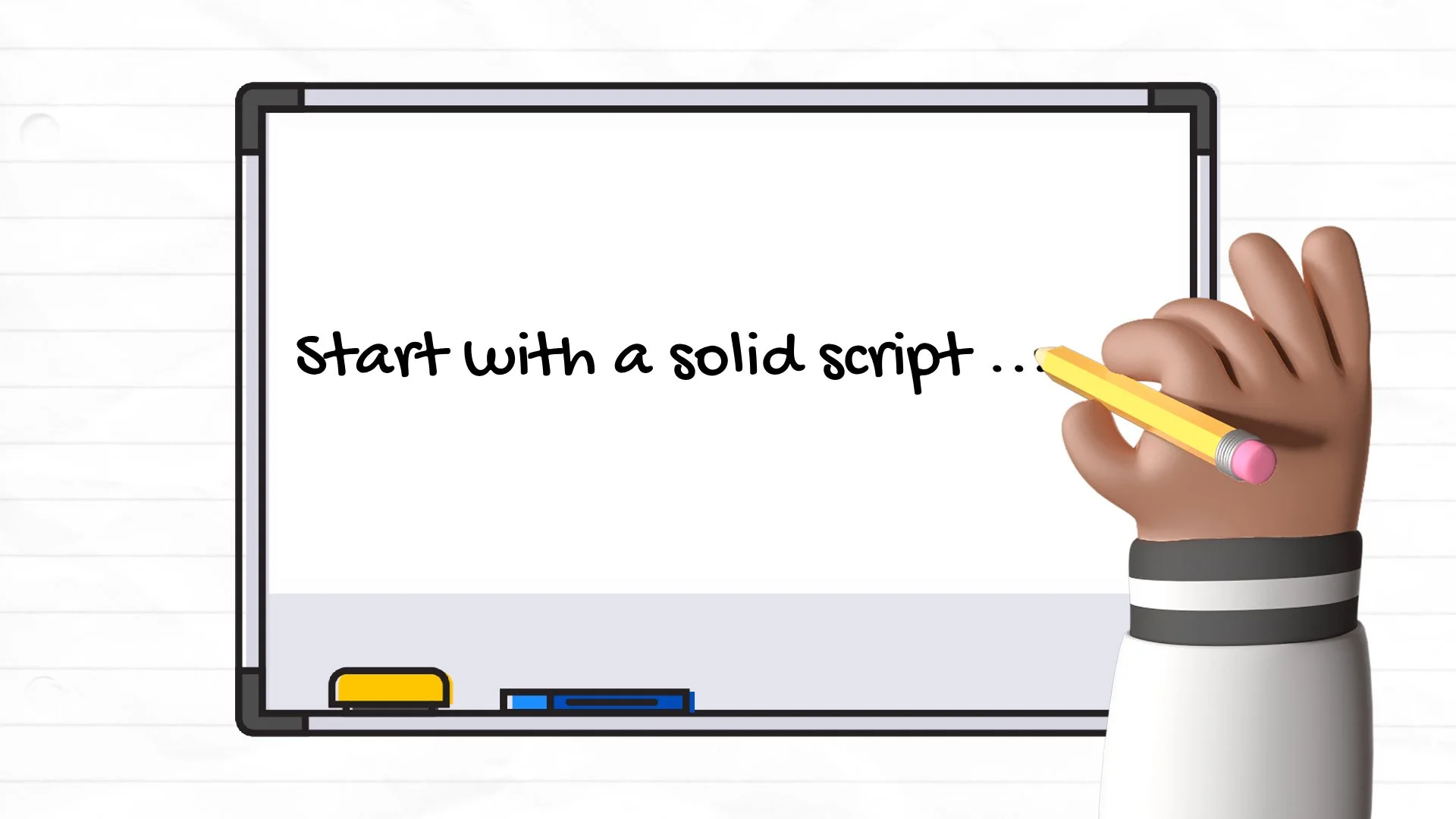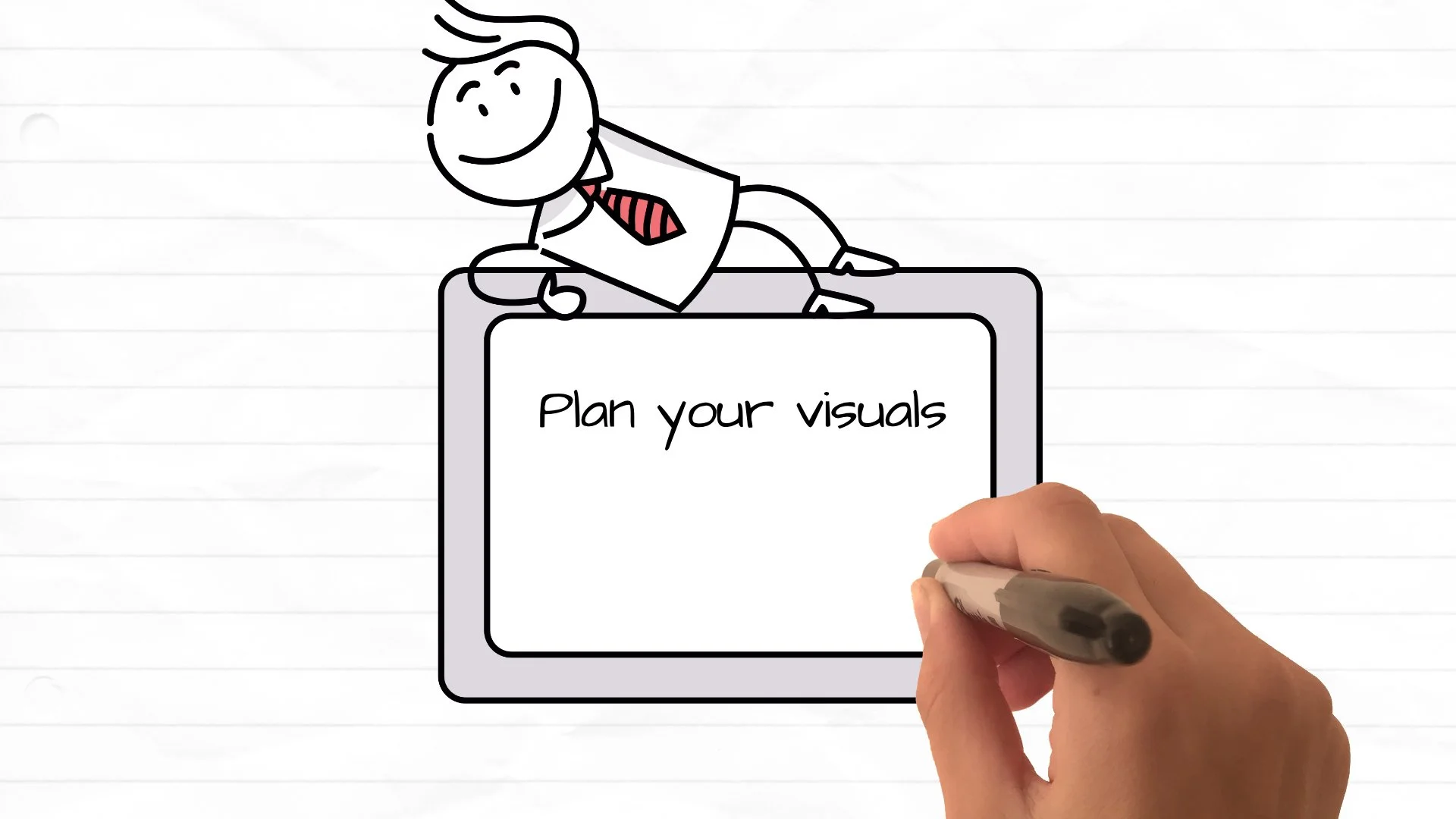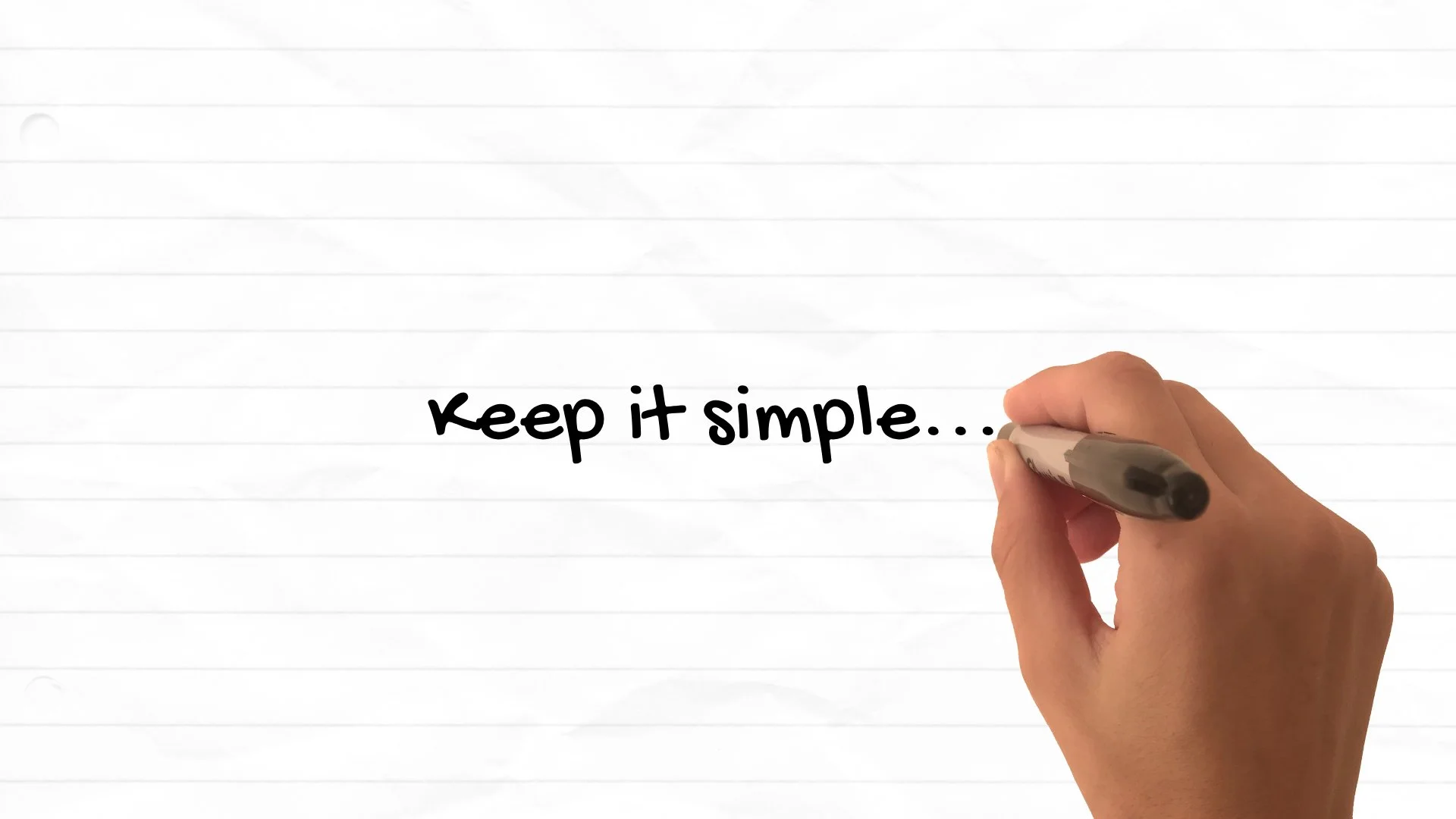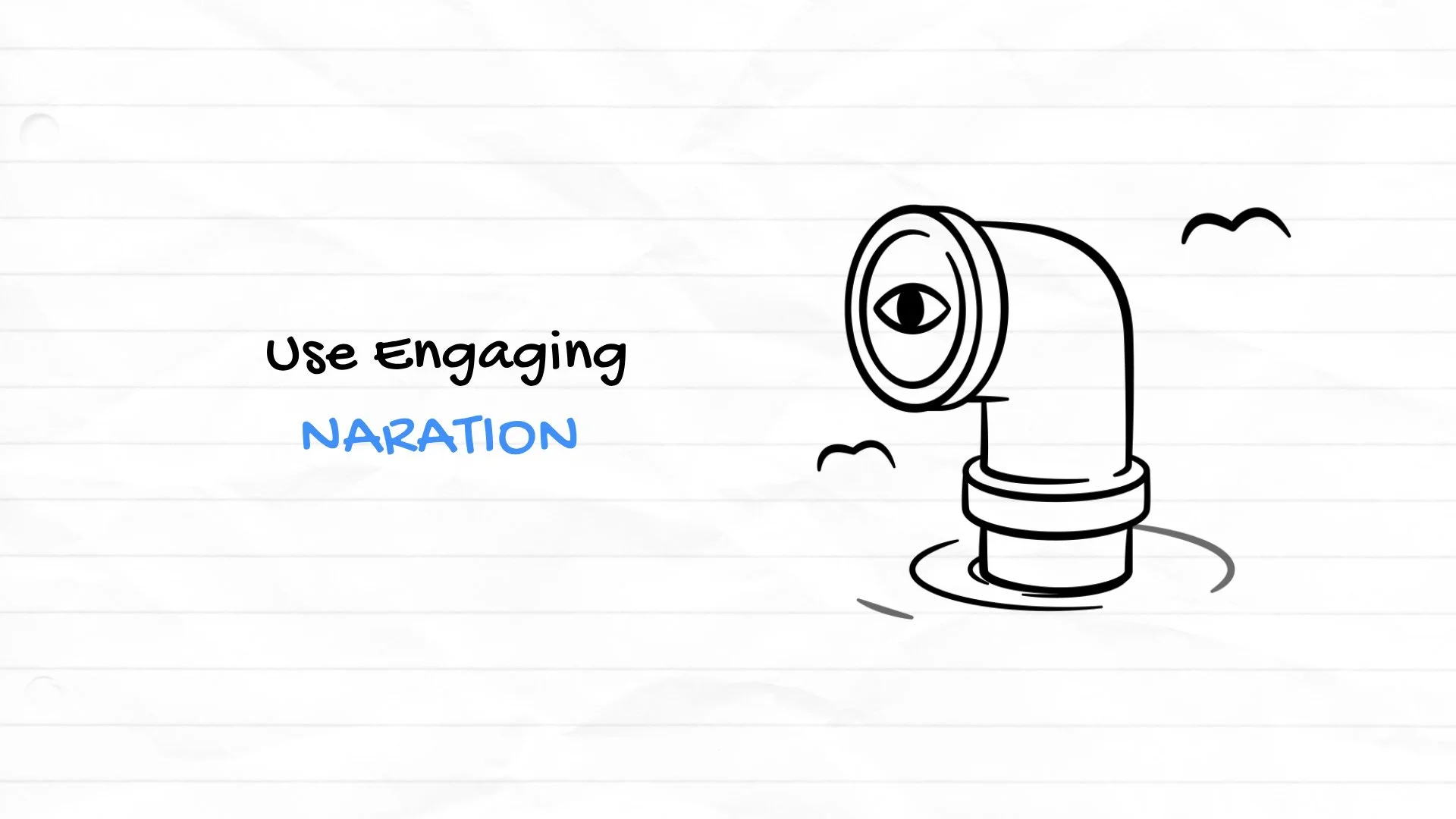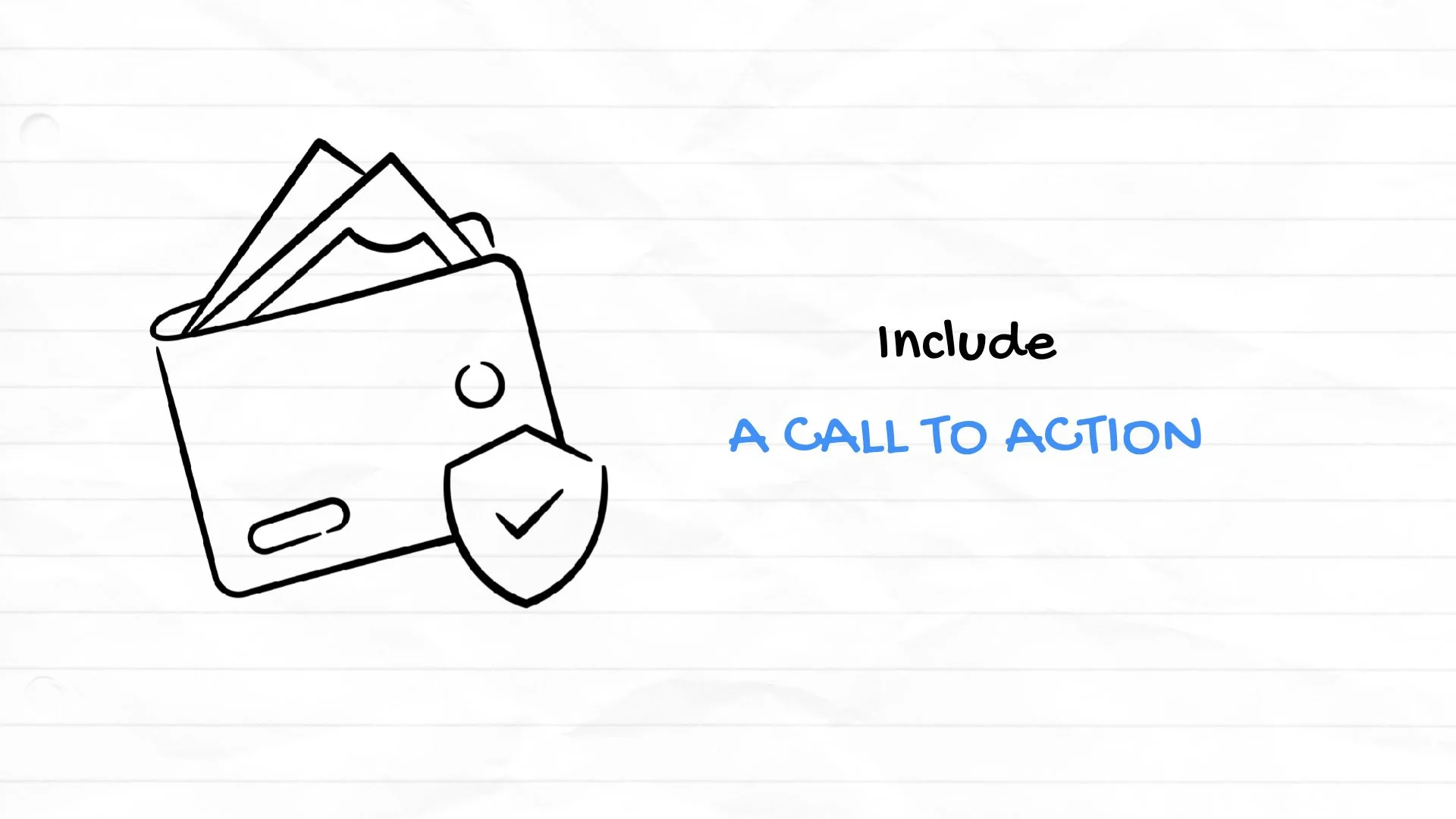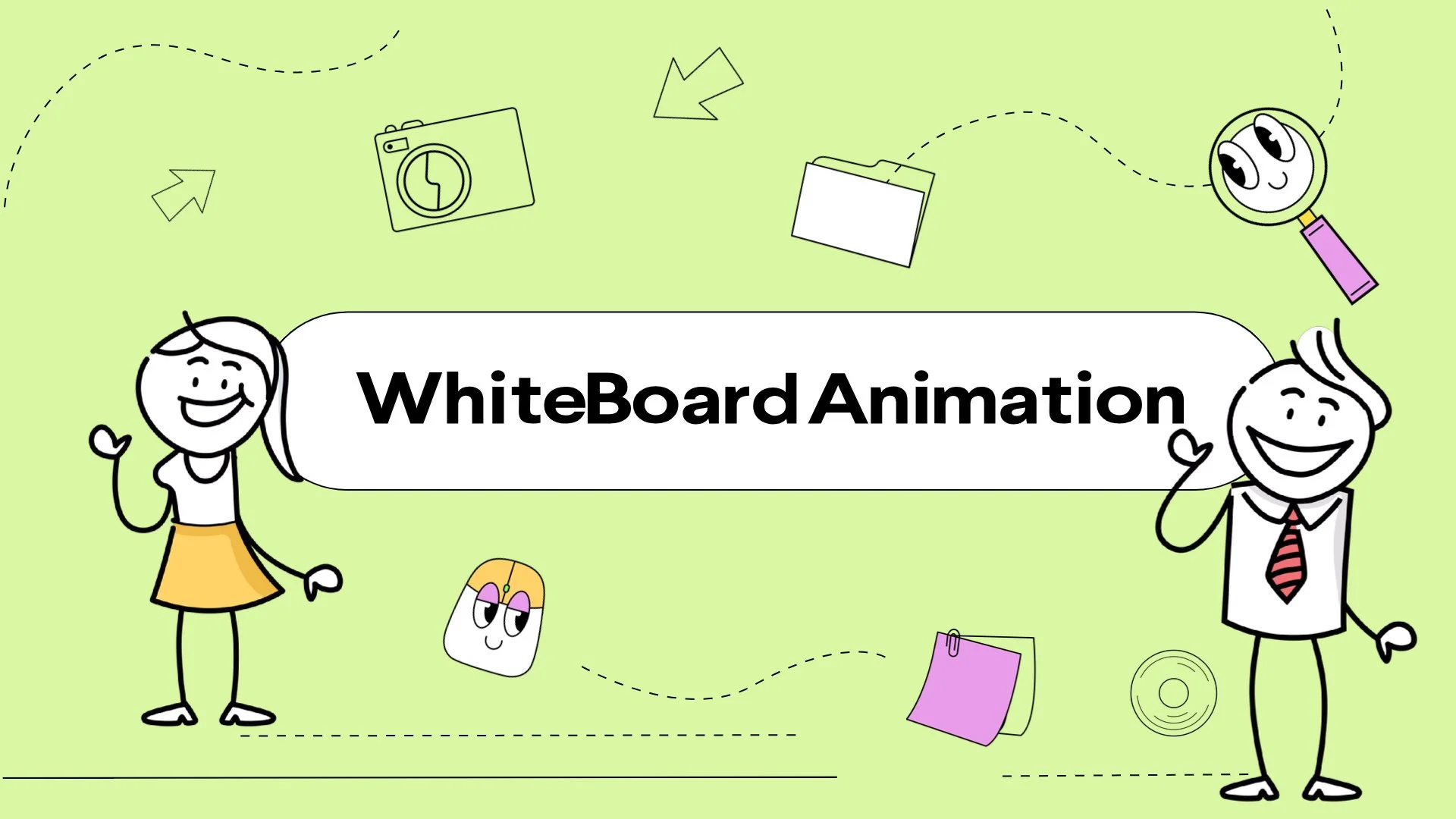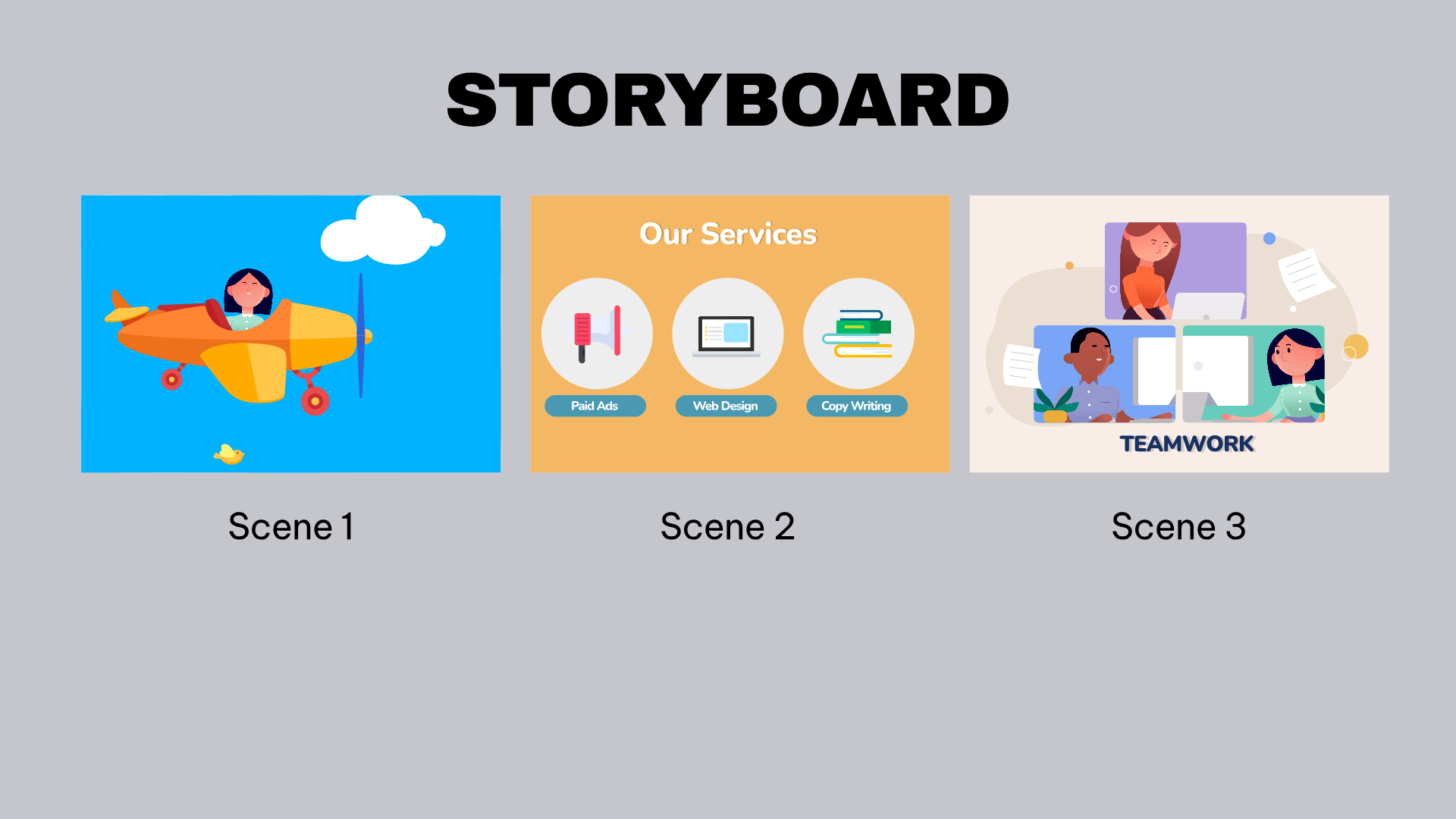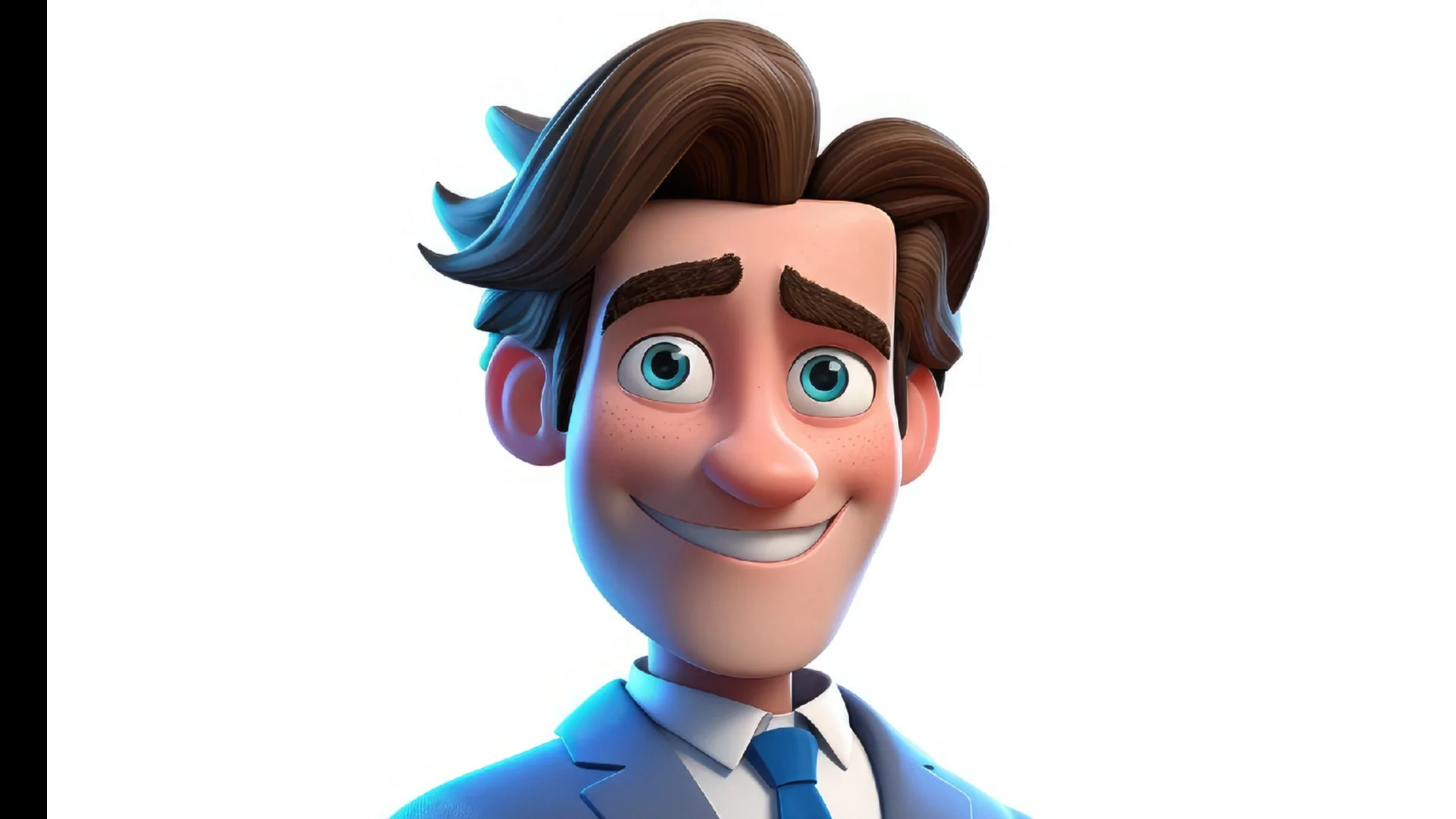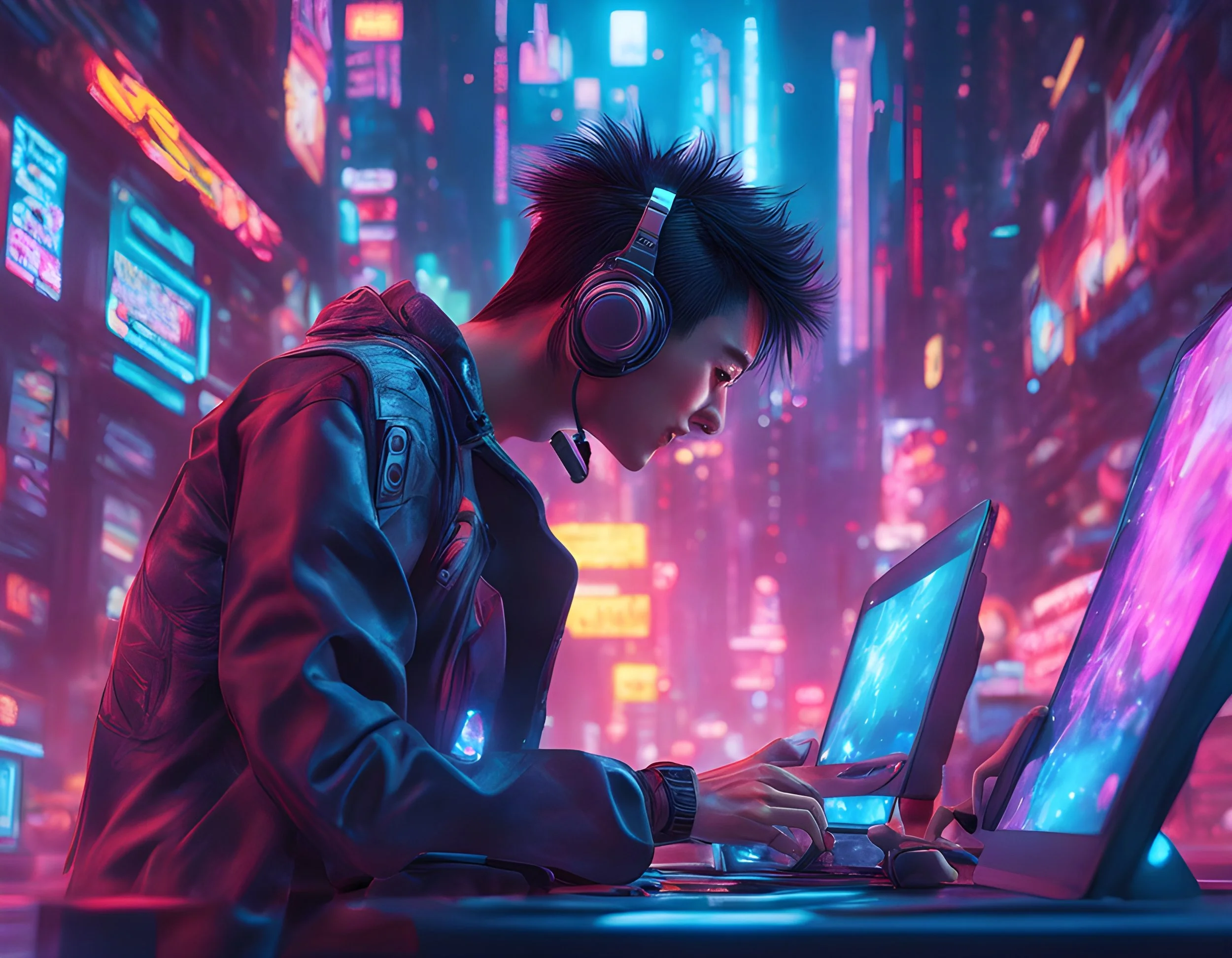3D Animated Explainer Videos vs. Live-Action Videos: Which is Better for Your Brand?
In the world of digital marketing, video content has become one of the most effective tools for engaging audiences, building brand awareness, and driving conversions. As a business, you may be wondering: “should I choose 3D animated explainer videos or live-action videos to represent my brand”? Both have unique strengths, and the right choice depends on your message, audience, and goals.
3D Animated Explainer Videos vs. Live-Action Videos: Which is Better for Your Brand?
In the world of digital marketing, video content has become one of the most effective tools for engaging audiences, building brand awareness, and driving conversions. As a business, you may be wondering: “should I choose 3D animated explainer videos or live-action videos to represent my brand”? Both have unique strengths, and the right choice depends on your message, audience, and goals.
At Motionverse, we specialize in both “3D animated explainer videos” and”live-action advertising videos”, and we're here to help you navigate which option is best for your brand.
The Case for 3D Animated Explainer Videos
1. Creative Freedom
3D animation allows for limitless creativity. You can visualize abstract concepts, build fantastical worlds, and explain complex processes with ease. For tech companies, startups, or businesses offering intricate services, animation can simplify complicated information and present it in a visually engaging way.
2. Consistency in Branding
With 3D animation, you have complete control over the visual style, color palette, and overall feel of the video. This ensures that your brand identity remains consistent and recognizable. Whether you're explaining your product or delivering a corporate message, animation can be tailored to match your brand’s aesthetic.
3. Cost-Effective for Long-Term Use
Unlike live-action, which requires regular updates due to changing trends or outdated footage, animated videos can be evergreen. Once created, they can be used for years without needing much modification, providing excellent ROI.
4. Engagement and Fun Factor
Audiences tend to find animated videos entertaining and engaging. Whether you’re creating an explainer video, an educational piece, or a scroll-stopper for social media, 3D animation captivates viewers, keeping them hooked on your message.
The Case for Live-Action Videos
1. Human Connection
Nothing builds trust like seeing real people. Live-action videos establish a personal connection with your audience, showcasing human emotions, real-life settings, and genuine interactions. For brands that rely on trust and personal relationships, such as service-based industries, live-action is a great choice.
2. Relatable Content
Live-action videos allow viewers to see themselves in the scenarios you're presenting. This is particularly effective for testimonials, product demonstrations, and company culture videos where authenticity is key.
3. Flexibility Across Platforms
Live-action videos work exceptionally well for social media marketing, website landing pages, and even TV commercials. If you want to create an emotional impact, showcase behind-the-scenes content, or tell your brand story through real-world examples, live-action is powerful.
4. Fast Turnaround for Trending Content
Need to jump on a current trend or respond quickly to something in the market? Live-action videos can be produced relatively quickly, allowing your business to stay timely and relevant.
Which is Better for Your Brand?
The answer depends on your specific needs. If you're looking to explain complex product or services, and want something evergreen and visually versatile, 3D animated explainer videos are likely the way to go. On the other hand, if your goal is to build emotional connections, establish credibility, or humanize your brand, live-action videos may be more effective.
Some businesses may benefit from a hybrid approach—combining the creative appeal of 3D animation with the authenticity of live-action footage. This mix offers the best of both worlds and can elevate your brand’s storytelling to new heights.
Conclusion: Let Us Help You Decide
At Motionverse, we create both 3D animated explainer videos and live-action advertising videos tailored to your brand’s unique message and audience. If you're still unsure which is best for your business, we're here to help! Contact us today to discuss your project and discover how our video solutions can bring your brand to life.
The Role of 3D Animation in E-Commerce Success
In today's fast-paced digital landscape, capturing the attention of potential customers is more challenging than ever. As a 3D animation studio, we've seen firsthand how the power of 3D animation can transform e-commerce businesses. By leveraging explainer videos, scroll stoppers, and dynamic content for social media and advertising, e-commerce brands can achieve remarkable success.
The Role of 3D Animation in E-Commerce Success
In today's fast-paced digital landscape, capturing the attention of potential customers is more challenging than ever. As a 3D animation studio, we've seen firsthand how the power of 3D animation can transform e-commerce businesses. By leveraging explainer videos, scroll stoppers, and dynamic content for social media and advertising, e-commerce brands can achieve remarkable success.
Explainer Videos: Simplifying the Complex
Explainer videos are a game-changer for e-commerce. These short, engaging videos break down complex products or services into easily digestible content. A well-crafted 3D animated explainer video can illustrate the features and benefits of a product in ways that text or static images simply can't match. This not only helps in educating the audience but also significantly boosts conversion rates by providing clear and compelling reasons to make a purchase.
Scroll Stoppers: Capturing Instant Attention
In a world where users scroll through content at lightning speed, having a scroll-stopping 3D animation is crucial. These brief, eye-catching animations are designed to halt the endless scrolling and draw users' attention to your product or message. By incorporating vibrant visuals and engaging animations, scroll stoppers make a powerful first impression, encouraging potential customers to explore further.
Social Media: Enhancing Engagement
Social media platforms are saturated with content, making it essential to stand out. 3D animated videos excel in this area by offering visually stimulating content that encourages likes, shares, and comments. Whether it's a product launch, a seasonal promotion, or a brand story, 3D animations can convey your message in an entertaining and memorable way. This heightened engagement not only increases brand visibility but also fosters a deeper connection with your audience.
Advertising: Maximizing Impact
For advertising campaigns, 3D animations provide a versatile and impactful tool. They can be tailored to fit various formats, from short ads for social media to longer commercials for YouTube or other video platforms. The ability to create high-quality, visually appealing ads that resonate with viewers can significantly enhance the effectiveness of your advertising efforts. This not only drives traffic to your e-commerce site but also reinforces your brand's identity and values.
Conclusion
Incorporating 3D animation into your e-commerce strategy can lead to substantial growth and success. Whether through explainer videos, scroll stoppers, or dynamic social media and advertising content, 3D animations capture attention, engage audiences, and drive conversions. At our studio, we're passionate about helping e-commerce businesses harness the full potential of 3D animation to achieve their goals. Let us help you bring your products and brand to life in the most captivating way possible.
How 3D Animation Can Humanize Your Brand on Social Media
Imagine a character that embodies your brand's personality. This could be a charming robot, a wise owl, or even a talking taco—whatever suits your brand's vibe. This character becomes the face of your brand, engaging with your audience in ways a logo never could. They can crack jokes, share tips, and even celebrate holidays, all while keeping your brand at the forefront.
How 3D Animation Can Humanize Your Brand on Social Media
Let’s face it—social media can sometimes feel like a never-ending parade of polished posts and perfectly curated feeds. In this digital jungle, how can your brand stand out while still connecting with your audience on a human level? The answer might just lie in the vibrant world of 3D animation. Yes, those quirky animated characters and captivating stories can do wonders in making your brand more relatable and, dare we say, human. Let’s dive into how 3D animation can add a touch of humanity to your social media presence, one adorable character at a time.
The Magic of Animated Characters
Meet Your New Mascot
A Charming robot, a wise wizard or a talking panda !
Imagine a character that embodies your brand's personality. This could be a charming robot, a wise wizard, or even a talking panda—whatever suits your brand's vibe. This character becomes the face of your brand, engaging with your audience in ways a logo never could. They can crack jokes, share tips, and even celebrate holidays, all while keeping your brand at the forefront.
Stories That Stick
Animated characters can bring stories to life in a way that resonates with your audience. Whether it’s a day in the life of your brand’s mascot or a mini-adventure featuring your products, these stories create an emotional connection. People remember stories, and when your brand tells a good one, it’s likely to stick.
Expressive and Relatable
One of the greatest strengths of 3D animation is its ability to convey emotion. A well-animated character can show excitement, frustration, joy, and everything in between. This emotional expressiveness makes your brand feel more relatable. After all, it’s hard not to feel a connection with a character who’s clearly going through the same Monday blues as you are.
The Power of Visual Engagement
Scroll-Stopping Content
In the fast-paced world of social media, you have mere seconds to grab someone’s attention. 3D animations, with their vibrant colors and dynamic movements, are perfect for stopping those relentless thumbs in their tracks. An eye-catching animated post can draw people in and make them want to know more about your brand.
Simplifying the Complex
Got a complex product or service? 3D animation can break it down into easy-to-understand visuals. Animated explainer videos can turn a complicated process into a simple, engaging story. Your audience will appreciate the clarity, and you’ll appreciate the engagement.
Consistency is Key
Animated characters and stories provide a consistent visual style that ties your content together. This consistency helps build a recognizable brand identity, making it easier for your audience to remember and relate to your brand. Plus, it’s just fun to see a familiar face (even if it’s a cartoon one) pop up in your feed.
Adding Personality and Humour
A Dash of Humour
Let’s be honest—everyone loves a good laugh, and humour is a powerful way to connect with your audience. 3D animations allow you to infuse your brand with humour in a way that feels natural and engaging. Whether it’s a funny scenario featuring your mascot or a playful take on a trending topic, humour makes your brand more approachable.
Behind-the-Scenes Fun
Use 3D animation to take your audience behind the scenes in a fun and engaging way. Show your animated mascot “working” in your office, testing out new products, or preparing for a big launch. These glimpses behind the curtain make your brand feel more accessible and human.
Engage with Trends
Social media trends come and go, but jumping on a trending topic with a clever 3D animation can give your brand a boost. Whether it’s a viral challenge or a popular meme, your animated characters can participate in a way that feels fresh and relevant. Just make sure to keep it tasteful and on-brand!
Building a Community
Interactive Content
3D animations can also be interactive. Create polls, quizzes, or challenges that involve your animated characters. For example, ask your audience to help your mascot choose their next adventure or solve a fun puzzle. Interactive content not only boosts engagement but also fosters a sense of community.
Responding to Feedback
Animated characters can also play a role in customer interactions. Use them in thank-you videos, respond to comments, or address common questions. This adds a personal touch to your interactions and shows your audience that you value their input.
Celebrate Milestones
Celebrate your brand’s milestones with your animated characters. Whether it’s a product anniversary, a follower milestone, or a holiday, these celebrations can make your brand feel more festive and inclusive. Plus, they’re a great excuse to create some fun, shareable content.
Conclusion
In a world where social media feeds are often filled with perfection, 3D animation offers a refreshing way to humanize your brand. Animated characters and stories can make your brand more relatable, engaging, and memorable. So why not give it a shot? Bring a little magic to your social media presence, and watch as your audience begins to see your brand not just as a company, but as a friend. And remember, in the digital world, it’s the animated characters who often have the most heart.
Boosting Social Media Engagement with Eye-Catching 3D Animations
First things first: attention spans on social media are shorter than a hamster on a sugar rush. You’ve got about three seconds to grab someone’s attention before they scroll away. So, keep your 3D animations short and sweet. Aim for 10-30 seconds of pure, unadulterated awesomeness. Think of it like a shot of espresso for the eyeballs.
Ah, social media—the place where cats reign supreme, food pics get more love than your last birthday post, and scrolling becomes an Olympic sport. But amidst this digital cacophony, how do you make your brand stand out? Enter 3D animations—the dazzling, eye-catching marvels that can turn your social media presence from "meh" to "magnificent." Let’s dive into some tips and tricks for creating compelling 3D animations that will have your followers double-tapping, sharing, and maybe even sending you a friend request.
Tip 1: Keep It Short and Sweet
First things first: attention spans on social media are shorter than a hamster on a sugar rush. You’ve got about three seconds to grab someone’s attention before they scroll away. So, keep your 3D animations short and sweet. Aim for 10-30 seconds of pure, unadulterated awesomeness. Think of it like a shot of espresso for the eyeballs.
Tip 2: Hook 'Em Early
Start with a bang. Your opening scene should be so captivating that it stops thumbs in their tracks. Maybe it's a dramatic entrance by a quirky character, an unexpected explosion of colors, or a witty visual pun. Whatever it is, make sure it’s intriguing enough to lure viewers in from the get-go.
Tip 3: Tell a Tiny Tale
Even in a short animation, a little storytelling goes a long way. Create a mini-narrative with a beginning, middle, and end. Introduce a problem, add a dash of suspense, and finish with a delightful resolution. It’s like a Pixar movie, but snack-sized!
Tip 4: Make It Fun and Relatable
People come to social media to be entertained, not lectured. Inject humor and relatability into your animations. Think funny characters, witty dialogue, or playful scenarios. Remember that time when the WiFi died right in the middle of an important Zoom call? Yeah, turn that into a 3D animation and watch the likes roll in.
Tip 5: Leverage Trends and Memes
Jumping on trending topics and memes can catapult your engagement. Did a new meme just take over the internet? See if you can give it a unique twist with your 3D animation. Just be quick—social media trends have the lifespan of a mayfly.
Tip 6: Add a Dash of Interactivity
Interactive content is all the rage. Use 3D animations to create polls, quizzes, or challenges that invite your audience to participate. For example, an animated character could ask viewers to vote on what they should do next. Not only does this boost engagement, but it also makes your followers feel like part of the story.
Tip 7: Optimize for Each Platform
Different platforms, different rules. Instagram loves its square videos, TikTok thrives on vertical, and Twitter is all about quick hits. Optimize your 3D animations for the platform you’re posting on to ensure they look their best and get maximum engagement.
Tip 8: Use Vibrant Colors and Stunning Visuals
Your 3D animations should be a feast for the eyes. Use vibrant colors, dynamic movements, and stunning visuals to create animations that are impossible to ignore. Think of it as creating digital eye candy—sweet, satisfying, and irresistible.
Tip 9: Don’t Forget the Sound
While many users scroll with their sound off, a catchy tune or funny sound effect can enhance the experience for those who have their volume on. Just make sure your animation is still effective without sound—subtitles or visual cues can help convey the message.
Tip 10: Analyse and Adapt
Finally, keep an eye on your analytics. Which animations are getting the most engagement? Are viewers dropping off at a certain point? Use this data to tweak and improve your future animations. It’s a bit like being a mad scientist, but with fewer explosions and more happy followers.
Conclusion
Boosting social media engagement with 3D animations isn’t just about being flashy; it’s about being fun, relatable, and smart. By following these tips, you can create compelling 3D animations that captivate your audience, spark conversations, and ultimately, grow your brand's presence in the chaotic world of social media. So go on, use engaging animated content, and let those 3D animations do the talking. Who knows, your next post might just go viral—and wouldn’t that be something to tweet about?
Top Trends in 3D Animation for 2024: What to Watch Out For
Remember the days when you could easily tell the difference between animation and reality? Well, those days are numbered
Top Trends in 3D Animation for 2024: What to Watch Out For
Ladies and gentlemen, animators and animation aficionados, gather 'round! The world of 3D animation is ever-evolving, and 2024 is shaping up to be a blockbuster year. From jaw-dropping technological advancements to mind-blowing creative techniques, there’s a lot to get excited about. So grab your popcorn, sit back, and let’s dive into the top trends in 3D animation for 2024 that you absolutely need to watch out for!
1. Hyper-Realistic Animation: Almost Too Real
Remember the days when you could easily tell the difference between animation and reality? Well, those days are numbered. In 2024, hyper-realistic animation is taking center stage. Thanks to advances in rendering technology and AI, animated characters and environments are looking more lifelike than ever before. We're talking about pores on the skin, individual strands of hair, and shadows that dance with the light. It’s so real, you might find yourself doing a double-take!
Why It’s Cool:
This trend opens up endless possibilities for films, games, and virtual reality experiences that blur the line between fiction and reality.
2. Real-Time Rendering: Speed Meets Quality
Gone are the days of waiting hours, or even days, for a single frame to render. Real-time rendering is here to save the day (and your deadlines). With the help of powerful GPUs and smarter software, animators can see their creations come to life instantly. This not only speeds up the production process but also allows for more experimentation and creativity.
Why It’s Cool:
Real-time rendering makes the animation process faster and more flexible, letting creators iterate quickly and bring their visions to life without the wait.
3. AI-Powered Animation: The Robots Are Here to Help
Artificial Intelligence is making its mark in 3D animation in a big way. AI tools are now capable of automating tedious tasks like rigging and in-betweening, leaving animators free to focus on the creative aspects of their work. Plus, AI can analyze mountains of data to predict trends and preferences, helping studios create content that resonates with audiences.
Why It’s Cool:
AI-powered tools take the grunt work out of animation, allowing artists to concentrate on storytelling and artistry, and potentially creating more engaging and popular content.
4. Virtual Production: The Future of Filmmaking
Virtual production is revolutionizing the way films and animations are made. Using LED walls and real-time rendering, filmmakers can create immersive virtual environments that actors can interact with in real-time. This trend, popularized by shows like *The Mandalorian*, is now making its way into the world of 3D animation, allowing for more dynamic and realistic scenes.
Why It’s Cool:
Virtual production combines the best of physical and digital filmmaking, resulting in more authentic interactions and stunning visuals.
5. Stylized 3D: The Best of Both Worlds
While hyper-realism is impressive, stylized 3D animation is also gaining popularity. By blending the best elements of 2D art with 3D techniques, animators are creating unique visual experiences that stand out. Think of the painterly feel of *Spider-Man: Into the Spider-Verse* or the whimsical style of *The Legend of Zelda: Breath of the Wild*.
Why It’s Cool:
Stylized 3D allows for creative expression that goes beyond the limits of reality, resulting in visually captivating and distinctive animations.
6. 3D Animation in Augmented Reality (AR)
AR isn’t just for Pokémon Go anymore. 3D animation is making a big splash in the AR space, enhancing everything from advertising to educational apps. Imagine pointing your phone at a product and seeing an animated character pop up to explain its features, or kids learning about dinosaurs by interacting with a T-Rex in their living room.
Why It’s Cool:
AR brings animations into the real world, creating interactive and engaging experiences that can educate, entertain, and inspire.
7. Sustainability in Animation
As the world becomes more eco-conscious, the animation industry is following suit. Studios are adopting greener practices, from using renewable energy sources to minimizing waste in production processes. Additionally, stories and themes around sustainability are becoming more prevalent in animated content.
Why It’s Cool:
Animators are not only pushing the boundaries of their craft but also leading the way in promoting environmental responsibility and awareness.
8. Cross-Platform Storytelling
In 2024, the best stories aren’t confined to a single medium. Cross-platform storytelling is on the rise, with narratives unfolding across films, video games, social media, and even interactive experiences. This approach allows for deeper engagement and a more immersive experience for audiences.
Why It’s Cool:
Cross-platform storytelling provides a richer narrative experience and allows audiences to engage with content in multiple ways, creating a more dynamic and interactive storytelling landscape.
Conclusion
From AI-powered tools and hyper-realistic visuals to the creative flair of stylized 3D and the interactivity of AR, 2024 is poised to be an exciting year for 3D animation. These trends not only enhance the quality and efficiency of animated content but also open up new avenues for creativity and engagement. So, whether you’re an animator, a filmmaker, or just a fan of fantastic visuals, keep an eye on these trends. The future of 3D animation is bright, and we can’t wait to see what’s next!
The ROI of Animated Explainer Videos: Measuring Success
In the bustling world of digital marketing, animated explainer videos have become a powerful tool for businesses of all sizes. These engaging, informative videos simplify complex ideas and captivate audiences, making them a favourite for brands looking to boost their online presence. But how do you measure the success of these animated marvels? Fear not, intrepid marketer! We’re here to break down the strategies and metrics you need to measure the return on investment (ROI) of your animated explainer videos.
The ROI of Animated Explainer Videos: Measuring Success
In the bustling world of digital marketing, animated explainer videos have become a powerful tool for businesses of all sizes. These engaging, informative videos simplify complex ideas and captivate audiences, making them a favourite for brands looking to boost their online presence. But how do you measure the success of these animated marvels? Fear not, intrepid marketer! We’re here to break down the strategies and metrics you need to measure the return on investment (ROI) of your animated explainer videos.
Why Measure ROI ?
Before we dive into the nitty-gritty, let’s address the elephant in the room: why is measuring ROI so crucial? Understanding the impact of your explainer videos helps you:
1. Justify the Investment: Prove the value of the money and time spent on producing the video.
2. Optimize Future Content: Learn what works and what doesn’t to create even better content.
3. Align with Business Goals: Ensure your videos are contributing to your overarching business objectives.
With that in mind, let’s explore the key metrics and strategies for measuring the ROI of your animated explainer videos.
Key Metrics to Track
Key Metrics to Track
1. View Count
This is the most basic metric and a good starting point. How many people have watched your video? While high view counts are encouraging, they don’t tell the whole story.
2. Engagement Rate
Engagement metrics such as likes, comments, shares, and average watch time are crucial. These metrics reveal how compelling and relevant your content is to your audience. A high engagement rate indicates that your video resonates with viewers.
3. Click-Through Rate (CTR)
If your explainer video includes a call to action (CTA) with a link, tracking the click-through rate is essential. This shows how effective your video is at driving traffic to your website or landing page.
4. Conversion Rate
Ultimately, the goal of many explainer videos is to convert viewers into customers. Track how many viewers complete a desired action, such as signing up for a newsletter, downloading a resource, or making a purchase.
5. Retention Rate
Retention rate measures how long viewers stay engaged with your video. A high retention rate means viewers are watching your video from start to finish, indicating that your content is engaging and well-paced.
6. Social Sharing
Monitor how often your video is shared on social media. Shares amplify your video’s reach and signal that your content is valuable and worth spreading.
7. Feedback and Sentiment
Qualitative feedback from viewers can provide insights that quantitative metrics can’t. Pay attention to comments, reviews, and direct messages to gauge viewer sentiment.
Strategies for Measuring ROI
1. Set Clear Objectives
Before you even start creating your explainer video, define what success looks like. Are you aiming to increase brand awareness, generate leads, boost sales, or educate your audience? Clear objectives will guide your content creation and help you focus on relevant metrics.
2. Use Analytics Tools
Leverage tools like Google Analytics, YouTube Analytics, and social media insights to track and analyze your video’s performance. These platforms offer a wealth of data that can help you understand how your video is performing and where improvements can be made.
3. A/B Testing
Experiment with different versions of your explainer video to see which one performs better. Test variations in length, CTAs, visuals, and messaging to find the most effective combination.
4. Calculate Cost Per View (CPV) and Cost Per Acquisition (CPA)
To understand the financial impact, calculate your CPV by dividing the total cost of producing the video by the number of views. For CPA, divide the total cost by the number of conversions. These metrics help you assess the efficiency of your investment.
5. Track Over Time
Don’t just measure the impact of your explainer video immediately after launch. Track its performance over time to see how it continues to contribute to your goals. Some videos have a long-tail effect, driving traffic and conversions months after their initial release.
6. Gather Customer Insights
Survey customers or leads who have interacted with your video. Ask how they found the video, what they liked, and whether it influenced their decision to engage with your brand. This direct feedback can provide valuable insights into the video’s effectiveness.
Conclusion
Measuring the ROI of animated explainer videos is not just about tracking views and likes. It’s about understanding how these videos contribute to your business goals and optimizing them for even greater impact. By setting clear objectives, leveraging analytics tools, and focusing on the right metrics, you can demonstrate the value of your investment and continue creating compelling content that drives results.
So, roll up your sleeves, fire up those analytics dashboards, and get ready to uncover the true power of your animated explainer videos. Here’s to creating content that not only captivates but also delivers measurable success!
Creating Impactful Whiteboard Videos: Tips from the Pros
Hello, aspiring whiteboard video creators and doodle enthusiasts! If you’ve ever been mesmerized by a hand sketching out a brilliant idea on a blank canvas, you’re not alone. Whiteboard videos have a magical way of turning complex concepts into engaging and digestible content. But how do you create a whiteboard video that’s not just good, but truly impactful? Fear not, for we’ve gathered tips from the pros to help you craft whiteboard masterpieces that captivate and inform. Let’s dive in!
Creating Impactful Whiteboard Videos: Tips from the Pros
Hello, aspiring whiteboard video creators and doodle enthusiasts! If you’ve ever been mesmerized by a hand sketching out a brilliant idea on a blank canvas, you’re not alone. Whiteboard videos have a magical way of turning complex concepts into engaging and digestible content. But how do you create a whiteboard video that’s not just good, but truly impactful? Fear not, for we’ve gathered tips from the pros to help you craft whiteboard masterpieces that captivate and inform. Let’s dive in!
1. Start with a Solid Script
Tip from the Pros: “Your script is your blueprint. Make it clear, concise, and compelling.” — Amanda, Scriptwriter Extraordinaire
Before you even think about picking up that digital marker, you need a killer script. Your script should be the backbone of your video, guiding every doodle and word. Focus on clarity—avoid jargon and keep sentences short. Remember, the goal is to make complex ideas simple, so trim the fat and get to the point.
Pro Tip: Write as you speak. A conversational tone makes your content more relatable and engaging
2. Plan Your Visuals
Tip from the Pros: “Think visually! Plan out your sketches and transitions to match the narrative.” — Leo, Visual Maestro
Whiteboard videos are all about visual storytelling. Before you start drawing, create a storyboard to map out your key visuals. Think about how each image transitions to the next and how they support the script. The drawings should complement and enhance the spoken words, not overshadow them.
Pro Tip: Use symbols and simple drawings to convey ideas quickly. Stick figures and basic shapes work wonders!
3. Keep It Simple
Tip from the Pros: “Less is more. Simple drawings are often more effective than detailed illustrations.” — Emily, Simplification Specialist
Whiteboard videos are effective because of their simplicity. Don’t overcomplicate your drawings. Stick to clean lines and avoid cluttering the screen with too many details. Your audience should be able to understand your visuals at a glance.
Pro Tip: Use a limited color palette. Too many colors can be distracting. Stick to black and white with one or two accent colors.
4. Pace Yourself
Tip from the Pros: “Timing is everything. Give your audience enough time to absorb each point.” — Mark, Timing Tactician
The pacing of your whiteboard video is crucial. Too fast, and your audience might miss key points; too slow, and they might lose interest. Practice your timing to ensure that each drawing and line of script flows smoothly. Use pauses strategically to let important points sink in.
Pro Tip: Record a rough draft of your video and play it back. Adjust the pacing based on how it feels—smooth and steady wins the race!
5. Add a Personal Touch
Tip from the Pros: “Your unique style is what makes your video stand out. Don’t be afraid to let your personality shine through.” — Nina, Style Savant
One of the joys of whiteboard videos is the personal touch they bring. Whether it’s your hand in the video, your quirky drawing style, or your enthusiastic narration, let your personality come through. This connection makes your content more relatable and memorable.
Pro Tip: Include a brief introduction of yourself or your brand at the beginning. It sets the stage and builds a connection with your audience right away.
6. Use Engaging Narration
Tip from the Pros: “Your voice is a powerful tool. Use it to emphasize points and keep viewers engaged.” — Alex, Vocal Virtuoso
A good whiteboard video isn’t just about what you see—it’s also about what you hear. Your narration should be clear, enthusiastic, and engaging. Vary your tone and pace to keep things interesting. And remember to match your energy to the content; excitement is contagious!
Pro Tip: Smile while you speak. It might sound strange, but it makes your voice sound more friendly and enthusiastic.
7. Include a Call to Action
Tip from the Pros: “Don’t leave your audience hanging. Always end with a clear call to action.” — Sam, Call to Action Connoisseur
What do you want your audience to do after watching your video? Visit your website? Subscribe to your channel? Make sure you include a clear and compelling call to action at the end of your video. Guide your viewers on the next steps they should take.
Pro Tip: Make your call to action specific and actionable. Instead of saying “Visit our website,” say “Visit our website to download your free guide.”
Conclusion: Ready, Set, Draw!
Creating impactful whiteboard videos is a blend of art and strategy. As a professional 3D animation studio MOTIONVERSE can handle everything for you. Or if you wish to tackle it yourself with a solid script, clear visuals, and engaging narration, you can transform complex ideas into captivating stories that resonate with your audience. So grab your markers (digital or otherwise), unleash your creativity, and get ready to doodle your way to success. Remember, in the world of whiteboard videos, simplicity is your superpower!
Happy drawing!
Whiteboard vs. 3D Animation: Which Style is Right for Your Message?
So, you’ve got a message to share with the world. Maybe it's a brilliant idea, a groundbreaking product, or perhaps just a reminder to wash your hands (thanks, 2020!). But here’s the million-dollar question: Should you go for a classic whiteboard animation or dive into the vibrant world of 3D animation? Let’s break it down in a way that’s as entertaining as it is enlightening.
Whiteboard vs. 3D Animation: Which Style is Right for Your Message?
So, you’ve got a message to share with the world. Maybe it's a brilliant idea, a groundbreaking product, or perhaps just a reminder to wash your hands (thanks, 2020!). But here’s the million-dollar question: Should you go for a classic whiteboard animation or dive into the vibrant world of 3D animation? Let’s break it down in a way that’s as entertaining as it is enlightening.
The Tale of Two Animations
Imagine you’re at a party. On one side of the room, there’s Whiteboard Animation—cool, casual, and always ready with a marker. On the other side, there’s 3D Animation—glamorous, eye-catching, and with a flair for the dramatic. Both are great fun, but which one should you befriend to get your message across?
Whiteboard Animation
The doodle dynamo !
Pros:
1. Simplicity at Its Best: Whiteboard animations are like a good cup of coffee—simple, straightforward, and incredibly effective. They take complex ideas and break them down into easy-to-digest visuals.
2. Cost-Effective: No need to break the bank! Whiteboard animations are usually more affordable to produce. You don’t need a Pixar-sized budget to get started.
3. Educational Vibes: They’re the teacher’s pet of the animation world. Whiteboard videos are perfect for educational content, training sessions, and explainer videos. They give off that "I’m learning something important" feel.
4. Flexibility: You can pivot quickly. Need to add another point or tweak the storyline? No problem! Whiteboard animations are like your doodle pad—flexible and forgiving.
Cons:
1. Not Always Eye-Catching: In the land of bright colors and flashy effects, a black-and-white doodle might not stand out as much.
2. Limited Emotional Engagement: While they’re great for explaining, they might lack the emotional punch that more immersive styles can deliver.
3D Animation
The show stopper!
Pros:
1. Visual Feast: 3D animations are the eye candy of the animation world. With vibrant colors, detailed characters, and dynamic scenes, they’re designed to captivate.
2. Versatility: From epic space battles to microscopic adventures inside a cell, 3D animation can bring any vision to life. The sky (and beyond) is the limit!
3. Emotional Connection: With lifelike characters and expressive animations, 3D videos can tug at the heartstrings, making your message more relatable and memorable.
4. High Engagement: These animations can hold attention like a blockbuster movie. Viewers are more likely to watch all the way through, which is great for retention.
Cons:
1. Higher Costs: All that glitz and glamour doesn’t come cheap. 3D animations often require a bigger budget and more time to produce.
2. Complexity: More moving parts mean more room for things to go wrong. Creating 3D animations requires specialized skills and software, and revisions can be more complex.
Making the Choice: Which Is Right for You?
So, which animation style should you pick? Let’s weigh the options with a few scenarios.
1. You’re Explaining a Complex Process: Say you’re a tech company explaining how your new software works. Whiteboard animation is your best buddy here. It simplifies complex ideas and keeps your audience focused on the message without too many distractions.
2. You Want to Wow and Engage: If your goal is to impress and entertain—like launching a new product or creating a brand story—3D animation is your go-to. Its visual appeal and dynamic nature will captivate your audience and leave a lasting impression.
3. You’re on a Tight Budget: For startups or small businesses, budget constraints are real. Whiteboard animation offers a cost-effective solution without compromising on clarity and effectiveness.
4. You Need Emotional Impact: Maybe you’re a non-profit looking to share heartfelt stories. 3D animation can create relatable characters and immersive scenes that resonate emotionally with viewers.
5. Time is of the Essence: If you need a quick turnaround, whiteboard animations are generally faster to produce and easier to revise, making them a practical choice.
Conclusion: The Winner Is...
Well, it depends! Both whiteboard and 3D animations have their unique strengths and ideal use cases. The key is to match the animation style with your message, audience, and goals. Whether you’re simplifying a complex idea or creating an emotional connection, there’s an animation style that’s perfect for you. So, choose wisely, and watch your message come to life in the most engaging way possible.
Professional animation studios like MOTIONVERSE can advise you on the best type of video for your needs. Your audience is waiting to be wowed, informed, and entertained. And remember, whether it’s a whiteboard or a 3D spectacle, it’s all about making your message shine.
From Script to Screen: The Journey of Creating a 3D Explainer Video
In the world of digital marketing, a 3D explainer video can be a game-changer, offering a dynamic way to convey complex ideas and engage audiences. But what goes into creating one of these captivating videos? Let’s take a behind-the-scenes look at the journey of creating a 3D explainer video, from the initial concept and scripting to the final animated product.
Step 1: Concept Development
Brainstorming
The journey begins with brainstorming. This is where the team gathers to discuss the core message, target audience, and key objectives of the video. The goal is to generate a clear vision of what the video should achieve and how it should communicate the message.
Research and Analysis
Next, the team conducts thorough research to understand the product, service, or concept being explained. This involves understanding the pain points of the target audience and how the product or service provides a solution. Competitor analysis is also essential to identify what works and what doesn’t in similar videos.
Creative Brief
Based on the brainstorming sessions and research, a creative brief is developed. This document outlines the project’s goals, target audience, key messages, tone, style, and any specific requirements or constraints. The creative brief serves as a roadmap for the entire production process.
Step 2: Scripting
Crafting the Narrative
With a clear concept in place, the next step is writing the script. The script is the foundation of the explainer video, providing the narrative that will guide the visuals. It should be concise, engaging, and tailored to the target audience. The script typically includes:
Introduction: Hook the audience with a compelling opening.
Problem Statement: Clearly define the problem or pain point.
Solution: Introduce the product or service as the solution.
Benefits: Highlight the key benefits and features.
Call to Action: End with a strong call to action, guiding viewers on what to do next.
Review and Revisions
Once the initial draft of the script is ready, it goes through several rounds of review and revisions. Feedback from different stakeholders is incorporated to ensure the script aligns with the project’s goals and effectively communicates the message.
Step 3: Storyboarding
Visual Planning
The storyboard is a visual representation of the script. It outlines each scene of the video, including key actions, camera angles, and transitions. Storyboarding helps to visualize the flow of the video and identify any potential issues early in the process.
Scene by Scene Breakdown
Each scene in the storyboard corresponds to a part of the script. The storyboard includes sketches or digital illustrations, along with notes on timing, movements, and special effects. This detailed planning ensures that everyone involved in the production has a clear understanding of what each scene will look like.
Step 4: Design and Modeling
Creating the Assets
With the storyboard as a guide, the design and modeling phase begins. This involves creating the characters, environments, and other visual elements that will appear in the video. In 3D animation, this process includes:
Character Design: Designing the look and feel of the characters, ensuring they align with the brand and appeal to the target audience.
Environment Design: Creating the settings and backgrounds where the action will take place.
Prop Design: Developing any additional items or tools that characters will interact with.
3D Modeling
Once the designs are finalized, 3D models are created using specialized software. This step involves sculpting the characters and objects in three dimensions, adding details and textures to make them look realistic and appealing.
Step 5: Animation
Bringing the Characters to Life
The animation phase is where the magic happens. Animators bring the 3D models to life by adding movement and expressions. This involves:
Rigging: Creating a skeleton for the characters, allowing them to move in a natural and fluid way.
Animating: Moving the characters and objects frame by frame to match the actions described in the storyboard.
Voiceover and Sound Effects
A professional voiceover artist records the script, providing the narration for the video. Sound effects and background music are also added to enhance the overall viewing experience and emphasize key moments in the animation.
Step 6: Rendering and Editing
Finalizing the Visuals
Rendering is the process of generating the final visuals from the 3D models and animations. This step can be time-consuming, as it involves creating high-quality images and sequences. The rendered frames are then compiled into a final video.
Editing and Polishing
The final step is editing. This involves combining the rendered visuals with the voiceover, sound effects, and music. The editor ensures that the timing is perfect, transitions are smooth, and the overall video is polished and professional.
Step 7: Review and Delivery
Quality Control
Before the video is delivered, it undergoes a final review. This involves checking for any errors or inconsistencies and ensuring that the video meets the project’s goals and specifications. Feedback is incorporated, and any necessary adjustments are made.
Delivery and Distribution
Once the video is approved, it is delivered in the required format and resolution. The video can then be distributed across various platforms, including the company’s website, social media channels, and email campaigns.
Conclusion
Creating a 3D explainer video is a complex and collaborative process that involves a variety of skills and expertise. From the initial concept and scripting to the final animation and delivery, each step is crucial in producing a video that effectively communicates the intended message and engages the audience. By understanding and embracing this process, businesses can leverage the power of 3D explainer videos to enhance their marketing strategies and achieve their goals.
Explainer Videos: The Secret Weapon for Your Marketing Strategy
In today's digital age, capturing and retaining customer attention is a significant challenge for businesses. With the average person's attention span shrinking and the overwhelming amount of content available online, marketers must find innovative ways to stand out. Enter explainer videos: a powerful tool that can simplify complex ideas, engage viewers, and drive conversions. Let’s explore why explainer videos are the secret weapon for your marketing strategy, backed by case studies and success stories.
What Are Explainer Videos?
Explainer videos are short, animated videos that break down complex concepts, products, or services into easy-to-understand narratives. Typically lasting between one to two minutes, these videos use clear and concise language, combined with engaging visuals and storytelling techniques, to convey their message effectively.
Why Explainer Videos Work
1. Simplicity and Clarity: Explainer videos distill complex information into digestible content. By using animations, voiceovers, and graphics, they make it easier for viewers to understand and retain information.
2. Engagement: Videos are inherently more engaging than text or static images. They capture attention quickly and hold it longer, making it easier to convey your message.
3. Versatility: Explainer videos can be used across various platforms—websites, social media, email campaigns, and presentations. This versatility makes them a valuable asset in any marketing toolkit.
4. Improved SEO: Including videos on your website can boost your search engine rankings. Search engines favor video content, which can increase your visibility and drive more organic traffic.
Success Stories and Case Studies
Dropbox: Pioneering the Explainer Video
One of the most famous success stories of explainer videos is Dropbox. When the cloud storage company launched, it faced the challenge of explaining a new and abstract concept to potential users. Dropbox created a simple, engaging explainer video that clearly demonstrated the benefits of its service. The result? A 10% increase in conversion rates, which translated to millions of new users and significant revenue growth.
Dollar Shave Club: Viral Sensation
Dollar Shave Club's launch video is a textbook example of how humor and simplicity can create a viral hit. The company used an explainer video to introduce its subscription razor service, featuring the company's founder delivering a humorous and straightforward pitch. The video went viral, garnering millions of views and propelling Dollar Shave Club to instant fame and success, eventually leading to its $1 billion acquisition by Unilever.
Crazy Egg: Boosting Conversion Rates
Crazy Egg, a web analytics company, utilized an explainer video to illustrate the benefits of its heatmap tool. By showing exactly how their product worked and the value it provided, Crazy Egg increased its conversion rates by 64%. This case study highlights how explainer videos can effectively communicate the unique selling points of a product, leading to higher engagement and conversions.
Moz: Educating and Engaging
Moz, a leader in SEO tools, leveraged explainer videos to educate its audience about its complex suite of products. By simplifying technical jargon and providing clear demonstrations, Moz's explainer videos helped demystify SEO for its customers. These videos not only increased product adoption but also positioned Moz as a trusted authority in the SEO industry.
Best Practices for Creating Explainer Videos
To harness the full potential of explainer videos, consider these best practices:
1. Keep It Short and Sweet: Aim for a duration of one to two minutes. This ensures that you capture attention without overwhelming your audience.
2. Focus on the Problem and Solution: Clearly identify the problem your product or service solves and how it does so. Make the value proposition obvious.
3. Use Engaging Visuals: High-quality animations and graphics can make your video more appealing and professional.
4. Craft a Compelling Script: Your script should be concise, clear, and engaging. Avoid jargon and focus on delivering a straightforward message.
5. Include a Strong Call to Action: Guide viewers on what to do next, whether it’s visiting your website, signing up for a trial, or contacting your sales team.
Conclusion
Explainer videos are a powerful tool in the modern marketer's arsenal. Their ability to simplify complex ideas, engage audiences, and drive conversions makes them invaluable for any marketing strategy. The success stories of companies like Dropbox, Dollar Shave Club, Crazy Egg, and Moz illustrate the profound impact explainer videos can have. By incorporating well-crafted explainer videos into your marketing campaigns, you can effectively communicate your message, connect with your audience, and achieve your business goals. Embrace this secret weapon and watch your marketing efforts soar.
How 3D Animation Can Increase User Engagement and Dwell Time on Websites in 2024
How 3D Animation Can Increase User Engagement and Dwell Time on Websites in 2024
In the rapidly evolving digital landscape of 2024, businesses are continually seeking innovative ways to capture and retain the attention of online users. One of the most effective methods gaining momentum is the use of 3D animation. This powerful tool significantly enhances user engagement and increases dwell time on websites, providing a dynamic and immersive experience that static content cannot match. Here’s how 3D animation is transforming user interactions and boosting online success, supported by compelling statistics.
The Power of 3D Animated Videos
3D animated videos are a game-changer for websites aiming to stand out in a crowded digital space. Unlike traditional videos, 3D animations offer a level of depth and realism that engages users more effectively. According to a study by HubSpot, video content increases user engagement by 72%, and 3D animations amplify this effect by adding an interactive dimension. For example, animated explainer videos can vividly illustrate complex concepts or processes, making them more accessible and engaging for viewers. This enhanced understanding keeps users on the site longer and encourages them to explore further.
Enhancing User Experience with 3D Storytelling
One of the key advantages of 3D animation is its ability to tell compelling stories. A well-crafted 3D animation can convey a brand’s story or the benefits of a product in a way that resonates emotionally with viewers. According to a report by Animoto, 73% of consumers say that they are more likely to purchase a product or service if they can watch a video explaining it. 3D storytelling engages users on a deeper level, fostering a stronger connection and increasing the likelihood of conversion.
SEO Benefits and Key Phrases
Using key phrases strategically in 3D animated content can also enhance your website’s SEO performance. Search engines prioritize websites that provide valuable and engaging content to users. By integrating key phrases related to your industry and products within the animation’s script, metadata, and descriptions, you can improve your search engine rankings. A study by Forrester Research found that websites with high-quality video content are 53 times more likely to rank on the first page of Google search results. Higher rankings result in increased visibility, more traffic, and longer dwell times as users engage with your compelling 3D content.
Real-World Applications and Success Stories
Many businesses have already seen significant benefits from integrating 3D animation into their websites. Educational platforms, for example, use 3D animated videos to explain complex subjects in an engaging and easy-to-understand manner. According to a survey by Wyzowl, 87% of businesses using video marketing say it has increased traffic to their website. Additionally, 80% of those marketers report that video content has directly increased their sales. This trend is expected to grow in 2024, as more companies recognize the value of immersive digital experiences.
Increasing Dwell Time with Interactive 3D Elements
Interactive 3D elements, such as animated infographics and interactive tutorials, can significantly increase dwell time. These elements invite users to engage actively with the content rather than passively consuming it. A study by Comscore found that websites incorporating interactive content see a 47% increase in user engagement compared to those with static content. This increased engagement leads to longer sessions, allowing brands more time to convey their message and drive conversions.
Conclusion
As we move further into 2024, the use of 3D animation on websites is proving to be a vital strategy for increasing user engagement and dwell time. By providing a more interactive and immersive experience, 3D animated videos and interactive elements captivate users and keep them on your site longer. This not only enhances the user experience but also contributes to higher conversion rates and improved SEO performance. Embracing 3D animation is essential for businesses looking to stay competitive and connect with their audience in meaningful ways. The statistics clearly show that 3D animation is not just a trend but a powerful tool for driving online success.
Boost Your SEO & Improve your Sales
In today’s digital landscape, businesses are constantly seeking innovative ways to stand out and engage their audience. One of the most effective methods is through 3D animation videos. These videos offer a multitude of advantages that can significantly enhance your business's online presence.
In today’s digital landscape, businesses are constantly seeking innovative ways to stand out and engage their audience. One of the most effective methods is through 3D animation videos. These videos offer a multitude of advantages that can significantly enhance your business's online presence.
Firstly, 3D animation brings a level of visual appeal and professionalism that is hard to match. By creating realistic and engaging content, businesses can effectively capture the attention of potential customers. This is particularly useful for websites and social media, where capturing and retaining audience interest is crucial.
Secondly, 3D animation simplifies complex ideas. Whether you’re explaining a new product, demonstrating a service, or breaking down intricate processes, 3D animations can make these concepts more accessible and easier to understand. This clarity can lead to increased customer comprehension and trust, ultimately boosting sales.
Moreover, 3D animated videos are versatile and shareable. They can be used across various platforms, from your website to social media channels, maximizing your reach. Engaging animations are more likely to be shared by viewers, increasing your brand’s visibility and attracting more potential customers.
In conclusion, incorporating 3D animation videos into your business strategy can enhance visual appeal, simplify complex messages, and broaden your reach, making it a powerful tool for boosting online engagement and sales.















